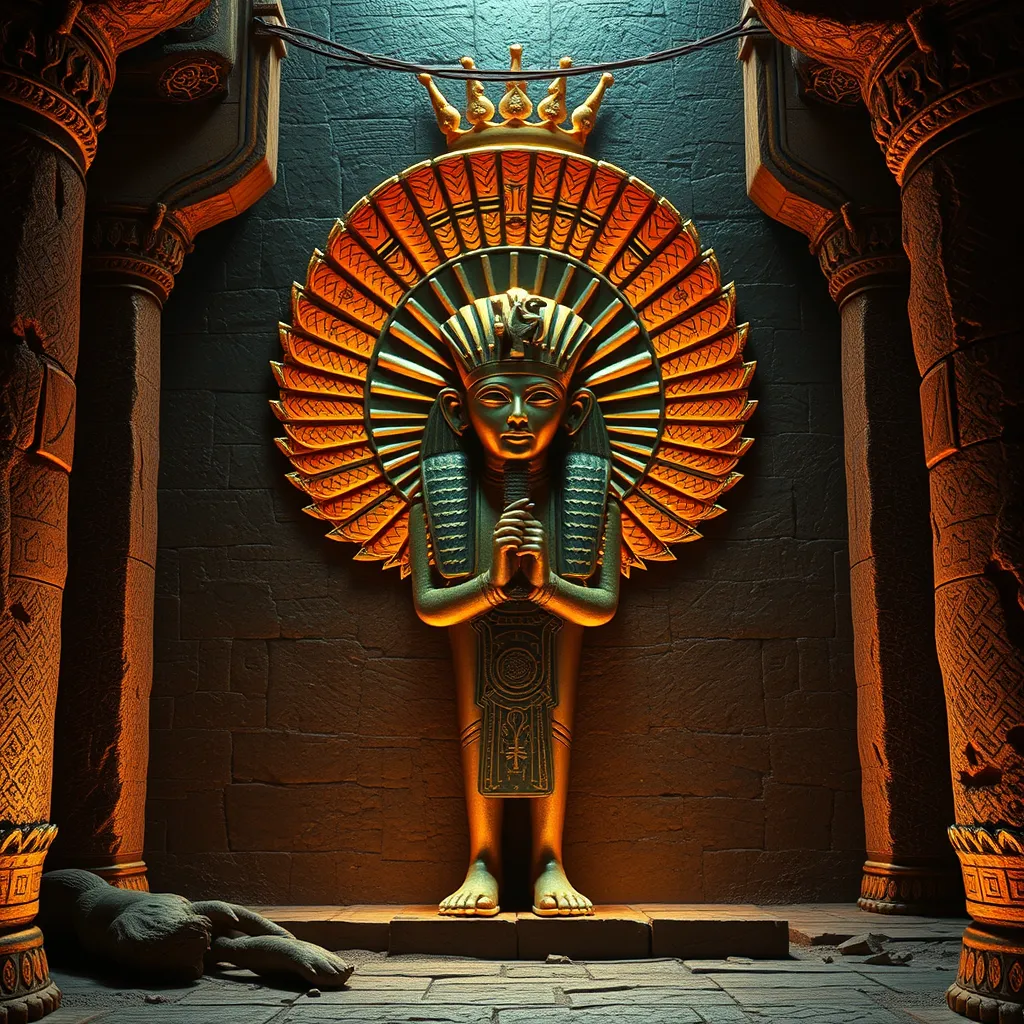The Book of the Dead: A Journey to the Afterlife for a New Generation
I. Introduction
The Book of the Dead is one of the most significant texts from ancient Egypt, serving as a guide for the deceased in their journey through the afterlife. This intricate work, filled with spells and illustrations, reflects the beliefs and customs surrounding death and resurrection in ancient Egyptian culture. Despite its age, this text continues to hold relevance, offering insights into the human condition and our understanding of life after death. This article aims to explore the importance of The Book of the Dead for contemporary readers, highlighting its historical context, structure, symbolism, and influence on modern culture.
II. Historical Context of The Book of the Dead
The Book of the Dead, known in ancient Egyptian as “The Book of Coming Forth by Day,” has its roots in earlier funerary texts, such as the Pyramid Texts and the Coffin Texts. These texts evolved over centuries, with the Book of the Dead emerging around the 16th century BCE during the New Kingdom period.
In ancient Egyptian society, the belief in an afterlife was central to their worldview. Egyptians believed that life continued after death, and the soul’s journey was fraught with challenges and judgments. The Book of the Dead played a crucial role in funerary practices, providing the deceased with spells to navigate the dangers of the underworld and to secure a favorable judgment before the gods.
III. Structure and Content of The Book of the Dead
The Book of the Dead is not a single volume but rather a compilation of spells, prayers, and illustrations tailored to assist the deceased. The text includes various chapters, often referred to as “spells,” that address different aspects of the afterlife journey. Some key chapters include:
- Spell 125: The Weighing of the Heart
- Spell 1: The Opening of the Mouth
- Spell 30B: The Negative Confession
Illustrations within The Book of the Dead are equally significant. These images served to guide and protect the deceased, depicting scenes of judgment, the afterlife, and the deities involved in the process. Variations exist from one papyrus to another, reflecting personal beliefs and regional practices.
IV. Symbolism and Themes
Central to The Book of the Dead are themes of death, rebirth, and immortality. The Egyptians viewed death not as an end but as a transformation into a new existence. The journey of the soul through the afterlife is depicted as a perilous voyage that requires knowledge and moral integrity.
Moral and ethical lessons pervade the spells, emphasizing the importance of living a virtuous life. The Negative Confession, for instance, presents a list of sins the deceased must deny to be deemed worthy of eternal life. This focus on morality reflects the broader values of ancient Egyptian society.
V. Modern Interpretations and Adaptations
In recent years, there has been a resurgence of interest in The Book of the Dead, with numerous publications and translations making the text more accessible. Scholars are reexamining the work, shedding light on its cultural significance and interpreting its messages for contemporary audiences.
Artistic and literary adaptations also abound in modern culture. From graphic novels to theatrical productions, The Book of the Dead’s themes resonate with those exploring existential questions in today’s world. Additionally, its influence extends to modern spirituality and philosophy, prompting discussions about life, death, and what lies beyond.
VI. Engaging a New Generation
To engage younger audiences, educational initiatives are increasingly incorporating The Book of the Dead into curricula. Resources such as interactive websites, documentaries, and workshops help demystify ancient texts and connect them to current societal themes.
Technology plays a pivotal role in this engagement. Digital archives and online platforms provide access to high-resolution images of ancient manuscripts, allowing students and enthusiasts to explore the text in new and exciting ways. This accessibility promotes a deeper understanding of the text’s historical and cultural context.
VII. The Book of the Dead in Popular Culture
The Book of the Dead has found its way into popular culture, influencing films, literature, and art. Movies often draw on ancient Egyptian mythology, encapsulating the allure of the afterlife in thrilling narratives. Literature, too, has seen a surge of interest in themes found within the text.
This resurgence of interest in ancient Egyptian mythology shapes contemporary perceptions of the afterlife. By blending historical elements with modern storytelling, creators provide audiences with a captivating glimpse into the beliefs that have endured through millennia.
VIII. Conclusion
The enduring legacy of The Book of the Dead speaks to its timeless relevance. As we explore our own beliefs about mortality and the afterlife, ancient texts offer valuable insights that transcend time and culture. Readers are encouraged to delve into these ancient writings, as they provide not only a glimpse into a fascinating civilization but also reflections on our own lives and legacies.
In today’s world, where questions about existence and the afterlife continue to captivate human thought, The Book of the Dead remains a vital source of wisdom. Its exploration of life, death, and what lies beyond can inspire contemporary individuals to reflect on their own beliefs and values.




